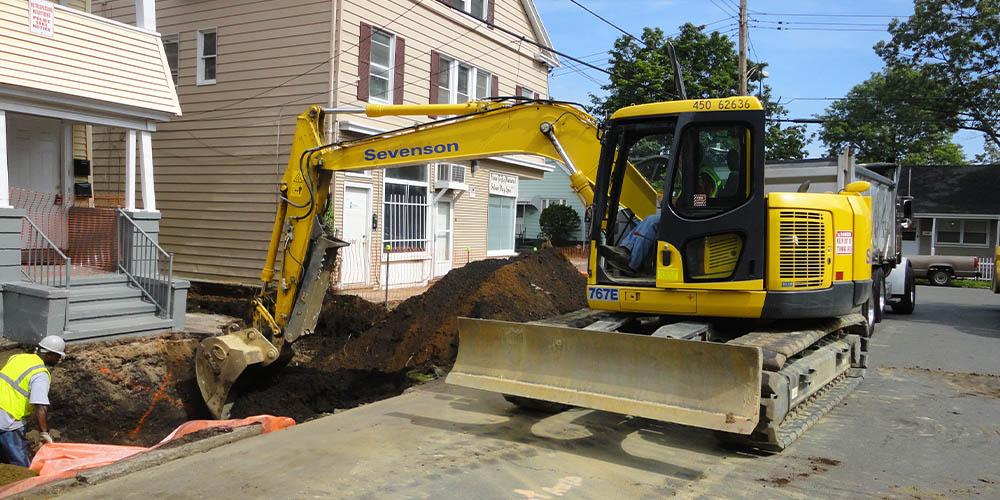
Newhall Street Neighborhood Non-Public Properties Remediation
| Location | Hamden, Connecticut |
| Contract Value | $30,000,000 |
| Period of Performance | August 2010 – October 2012 |
| Role | Prime Contractor |
History & Location
The Newhall Street neighborhood is located in Hamden, Connecticut. The neighborhood comprises an area that historically consisted of wetlands and low-lying areas. Waste materials were used to fill these areas from the late 1800s to the mid-1900s. Subsequently, homes, public buildings, and parks were built on and next to the historic fill areas. The fill material contained contaminants consisting primarily of metals, PAHs and PCBs.
Significant Project Features
- Design-build residential remediation required excavation, characterization, T+D of top 4 feet of soils from 300 properties
- Regularly scheduled project planning sessions prior to initiating remediation activities among a responsible party, its design engineer and Sevenson improved the final design document, identified opportunities for cost savings, and addressed potential remediation and restoration issues prior to mobilization to the field. Project planning activities were ongoing over a two (2) year period
- Neighborhood broken down into 18 blocks of homes. This minimized disruption to homeowners during remediation
- Extensive restoration of affected properties included concrete work, asphalt paving, deck and patio replacement, and landscaping
- Multi-media sampling conducted on soils and air for duration of project
- Detailed community relations plan focused on “open door” policy with residents and local stakeholders
- Newhall Street neighborhood remediation was the largest residential remediation project in Connecticut history
Project Gallery
Rooted in Remedial Construction
Expanded into Environmental Dredging
Start a conversation about your upcoming project
(716) 284 - 0431
© 2021 Sevenson Environmental Services -
Privacy Policy | Sitemap
2749 Lockport Road | Niagara Falls, NY 14305
P: (716) 284 - 0431 | F: (716) 284 - 7645
